Conversation with Karin Bjurström/Alice Fine
We first met Karin Bjurström and her brand Alice Fine when the Restaurant Frantzén in Stockholm was to receive a plant-dyed drapery from her, commisioned by the architects at Joyn Studio. The selected fabric was our silk and linen textile Aruba Mano Morbida.
My interest in plant dyeing grew from a desire to reduce the use of chemicals in the fashion industry. I wanted to find a more sustainable way to work—both in terms of production techniques and what is socially and personally sustainable. I had spent a couple of years trying to run a sustainable clothing brand and felt the need for a change.
In addition to her own production, artistic projects, interior design, and commissioned sewing work, she also teaches courses and gives lectures on plant dyeing. Last year, her book on plant dyeing – Plant Magic – was published by Natur & Kultur, and it will soon be translated into English.
During this year’s furniture fair here in Stockholm, Karin was part of our exhibition Astrid Creative Space, which focused on how fabrics, especially leftover fabrics, can be refined and reused. A fabric dyed using Karin’s technique can hide weaving flaws and stains on textiles that would otherwise be discarded. She led workshops and contributed several textile pieces in the form of curtains, cushions, and throws.
A: How did you get into plant dyeing?
KB: My interest in plant dyeing grew from a desire to reduce the use of chemicals in the fashion industry. I wanted to find a more sustainable way to work—both in terms of production techniques and what is socially and personally sustainable. I had spent a couple of years trying to run a sustainable clothing brand and felt the need for a change. I’ve always loved dyeing fabrics by hand, something I started doing as a child with my grandmother, who was skilled in textiles and made beautiful patchwork quilts.
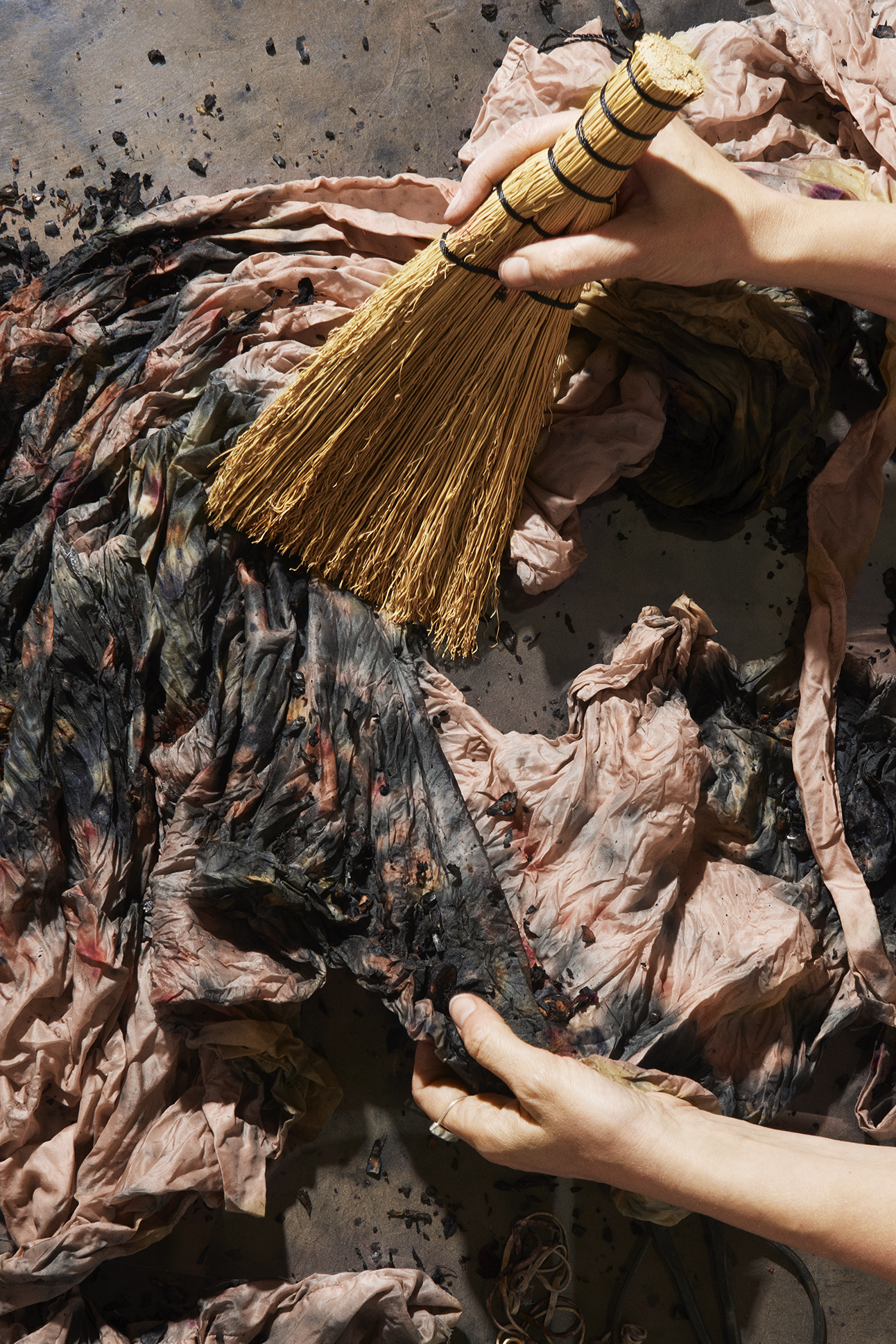 Karin's technique is to arrange plants in a pattern, it's called eco-printing, picture from Plant Magic
Karin's technique is to arrange plants in a pattern, it's called eco-printing, picture from Plant Magic
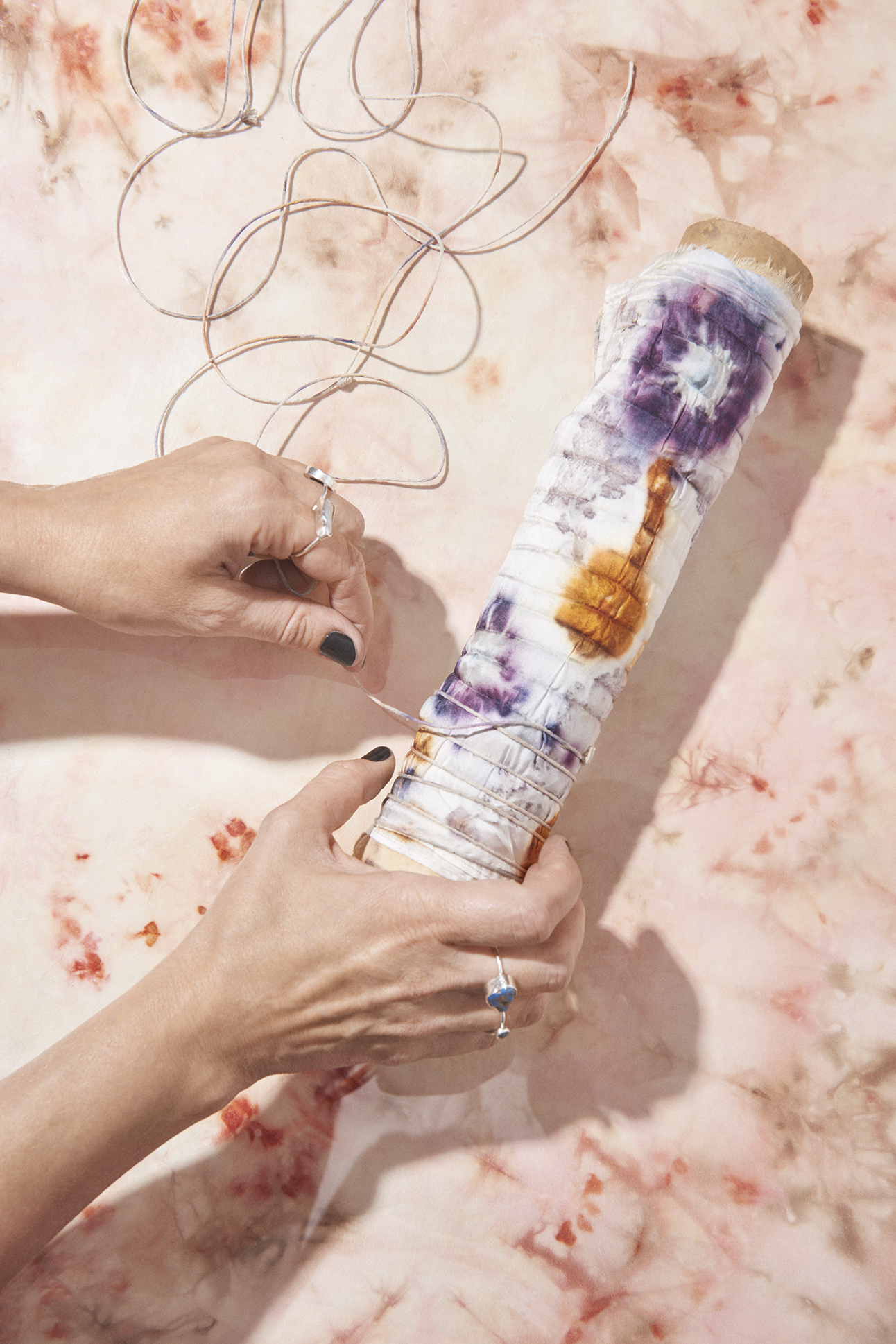 To keep everything in place when the fabric is being fixed, she ties it to a roll, picture from Plant Magic
To keep everything in place when the fabric is being fixed, she ties it to a roll, picture from Plant MagicThere was a wish to use kitchen waste from the restaurant, which became the starting point for the colour scheme. We combined that with pigments that I know are particularly lightfast, to create a durable and aesthetic result. This was my first large-scale curtain, and since then I’ve significantly improved my knowledge of lightfastness.
A: What does the process look like when you take on a project like the one at Frantzén?
KB: It usually starts with an initial meeting where I get an overall understanding of the project, its mood, and colour palette. In this case, it was with Joyn Studio, whom I’ve collaborated with before. We discussed the material choice for the curtain as well as which colours and fabrics we wanted to use.
There was a wish to use kitchen waste from the restaurant, which became the starting point for the colour scheme. We combined that with pigments that I know are particularly lightfast, to create a durable and aesthetic result. This was my first large-scale curtain, and since then I’ve significantly improved my knowledge of lightfastness.
A: How much do you sketch before beginning production?
KB:My sketching is mostly practical, making colour samples and testing different materials. I’ll also do a simple sketch to show approximately how the colors will be placed, focusing on creating a dynamic composition.
We decided early on to work with Astrid’s fabric Aruba, a silk-linen blend. The fabric has a fantastic drape and beautiful luster, which was perfect for the project.
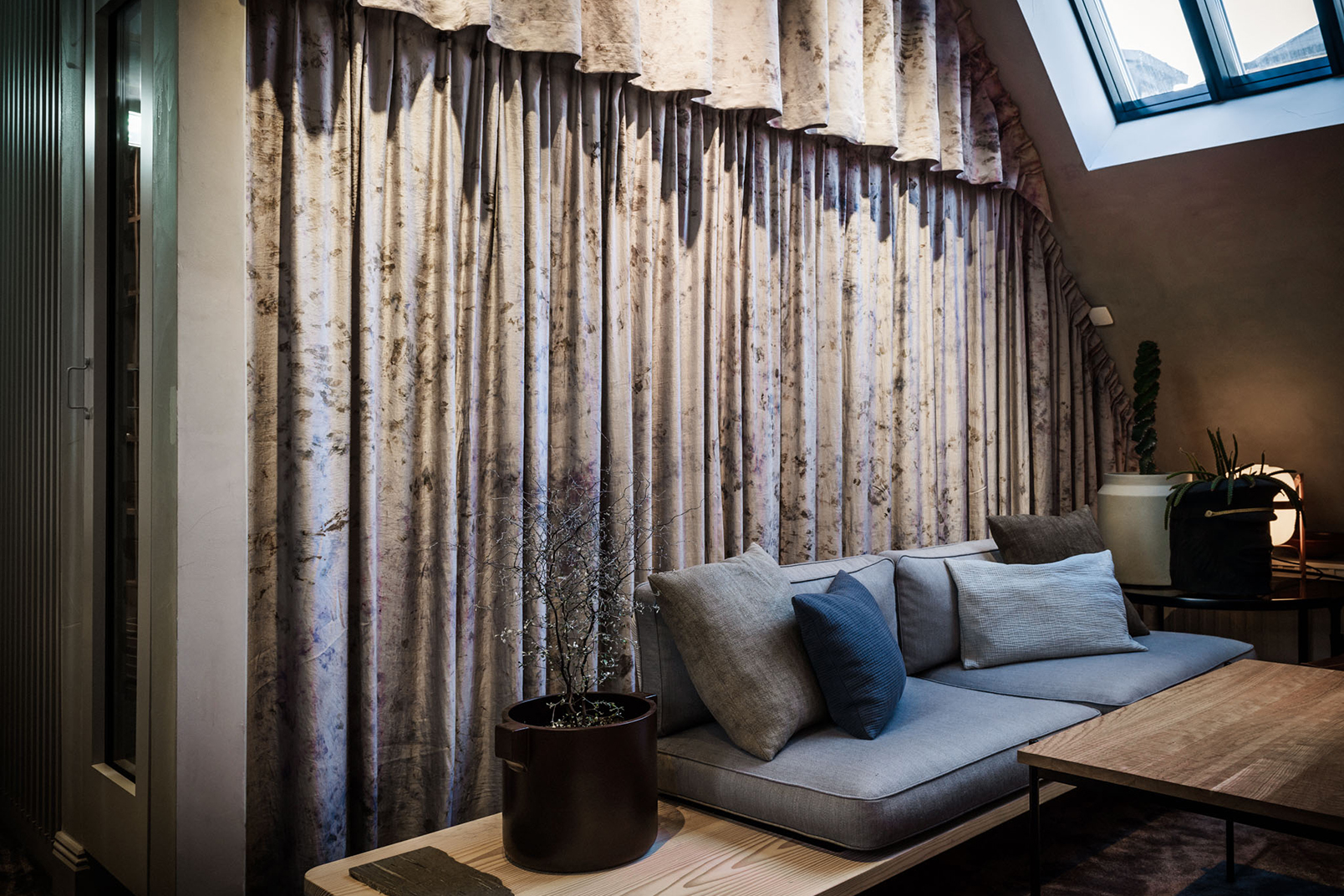 The drapery at Restaurant Frantzén
The drapery at Restaurant Frantzén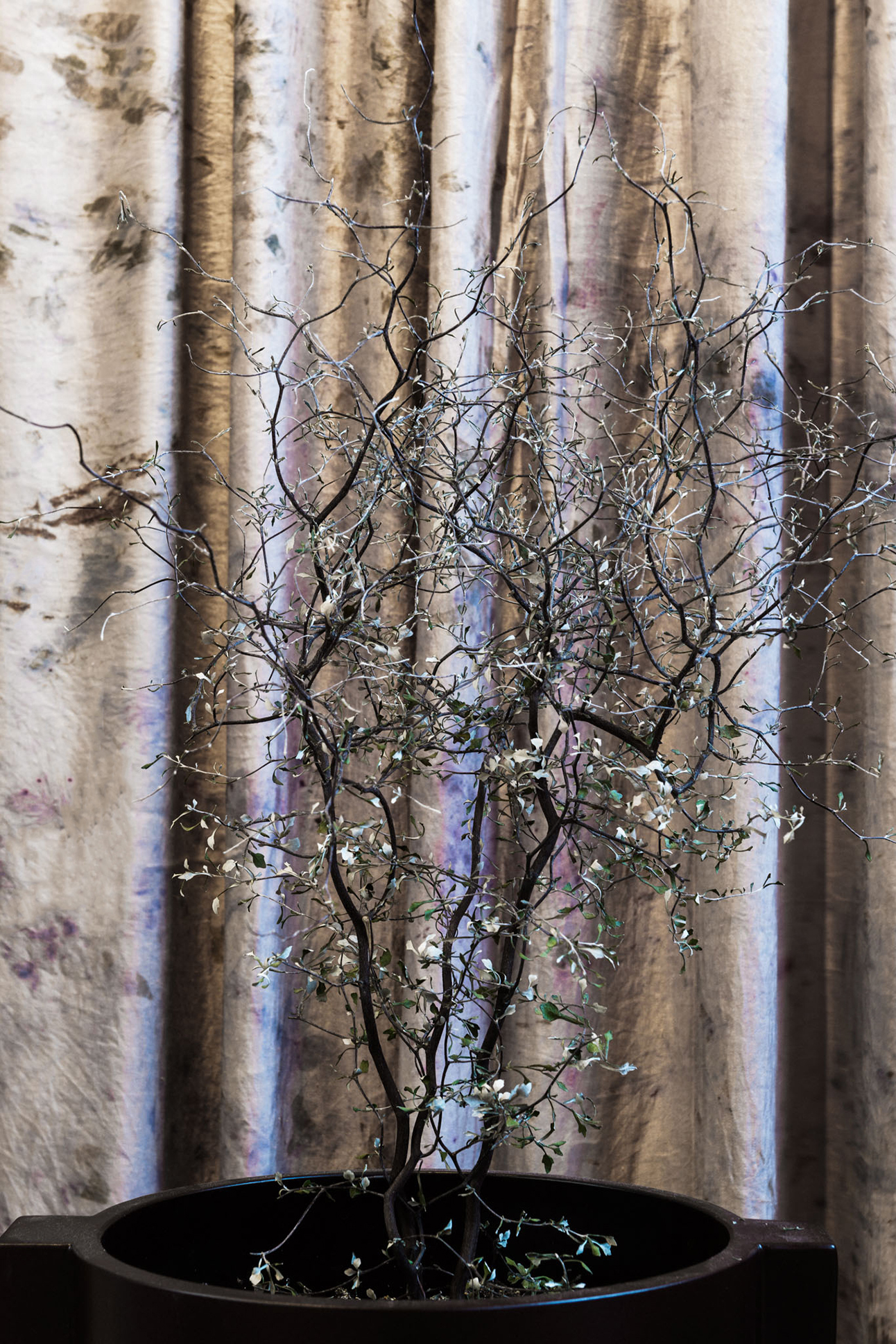 Close-up of the drapery at Restaurant Frantzén
Close-up of the drapery at Restaurant Frantzén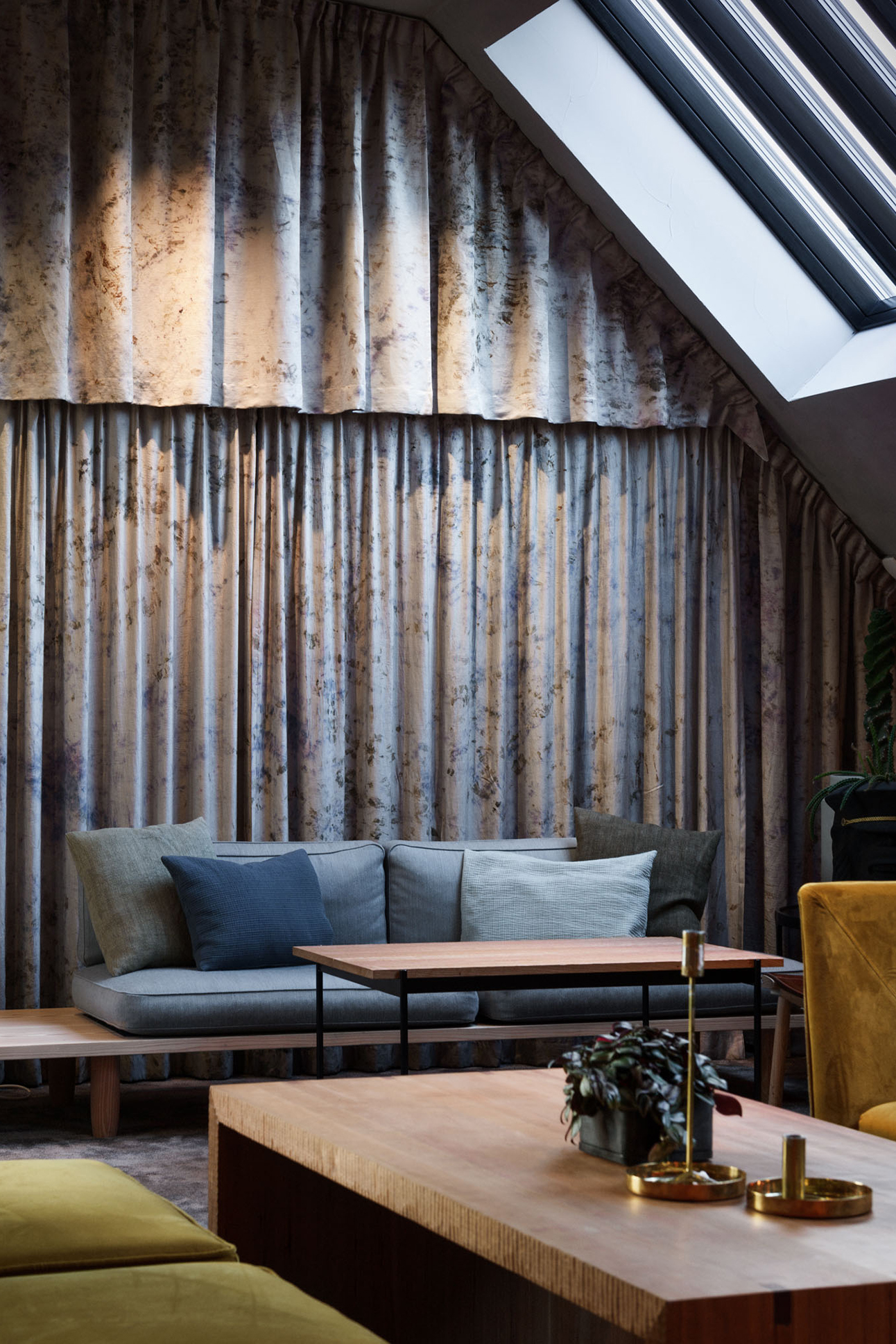 For the drapery, food waste from the restaurant was among the materials used
For the drapery, food waste from the restaurant was among the materials usedA: Is it difficult to work with large pieces of fabric like a curtain length?
KB: Yes, it’s not entirely straightforward! But it’s doable, I dye in sections and have access to a project space where I can lay out the panels to get an overview.
A: Which fabrics are best for plant dyeing?
KB: All natural materials can be dyed, but wool and silk take colour the best because they’re protein fibers from the animal kingdom. A molecular bond is formed between the plant pigment and the fiber.
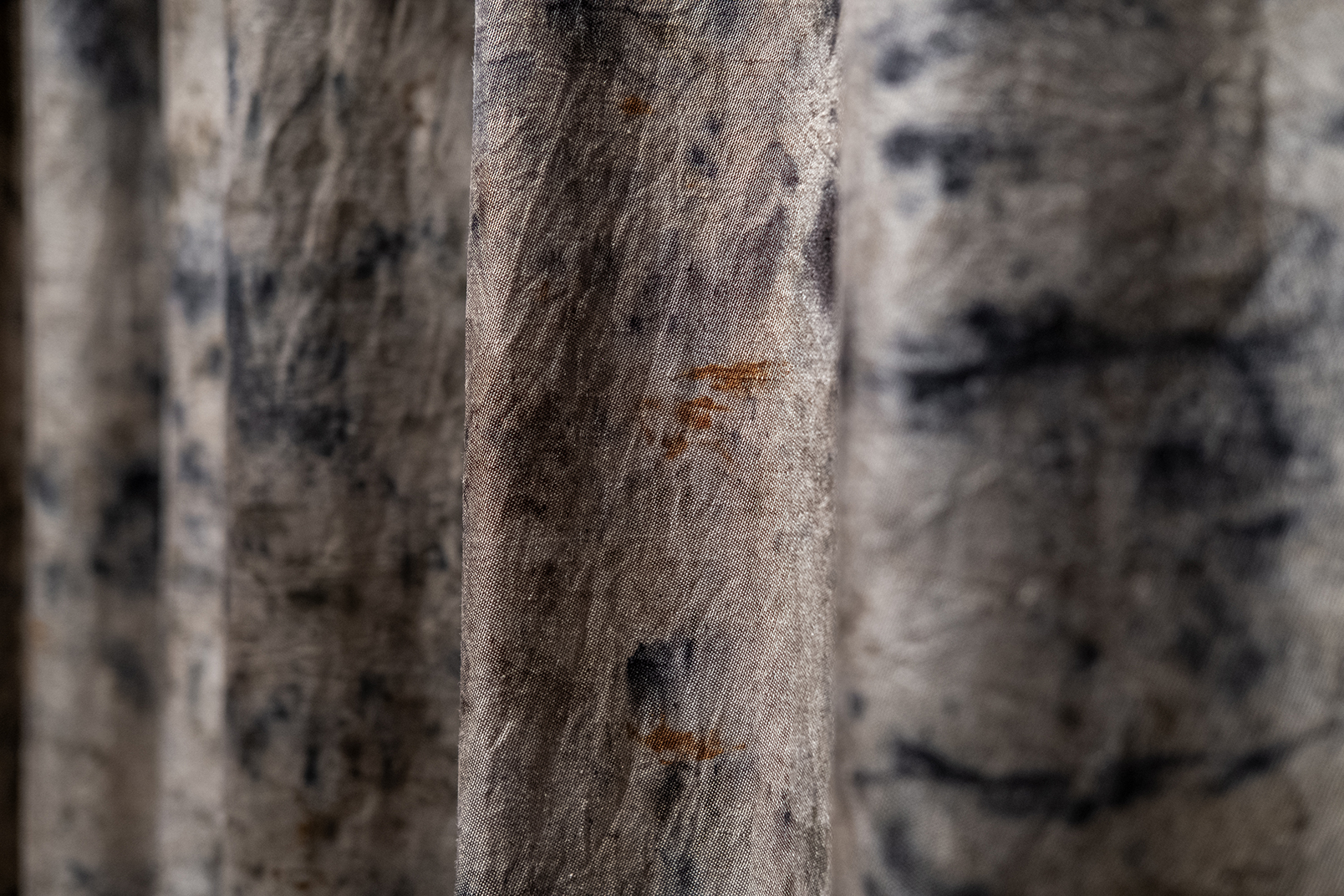 Close-up of the curtain at Restaurant Ekstedt, the fabric Aruba was also used here
Close-up of the curtain at Restaurant Ekstedt, the fabric Aruba was also used here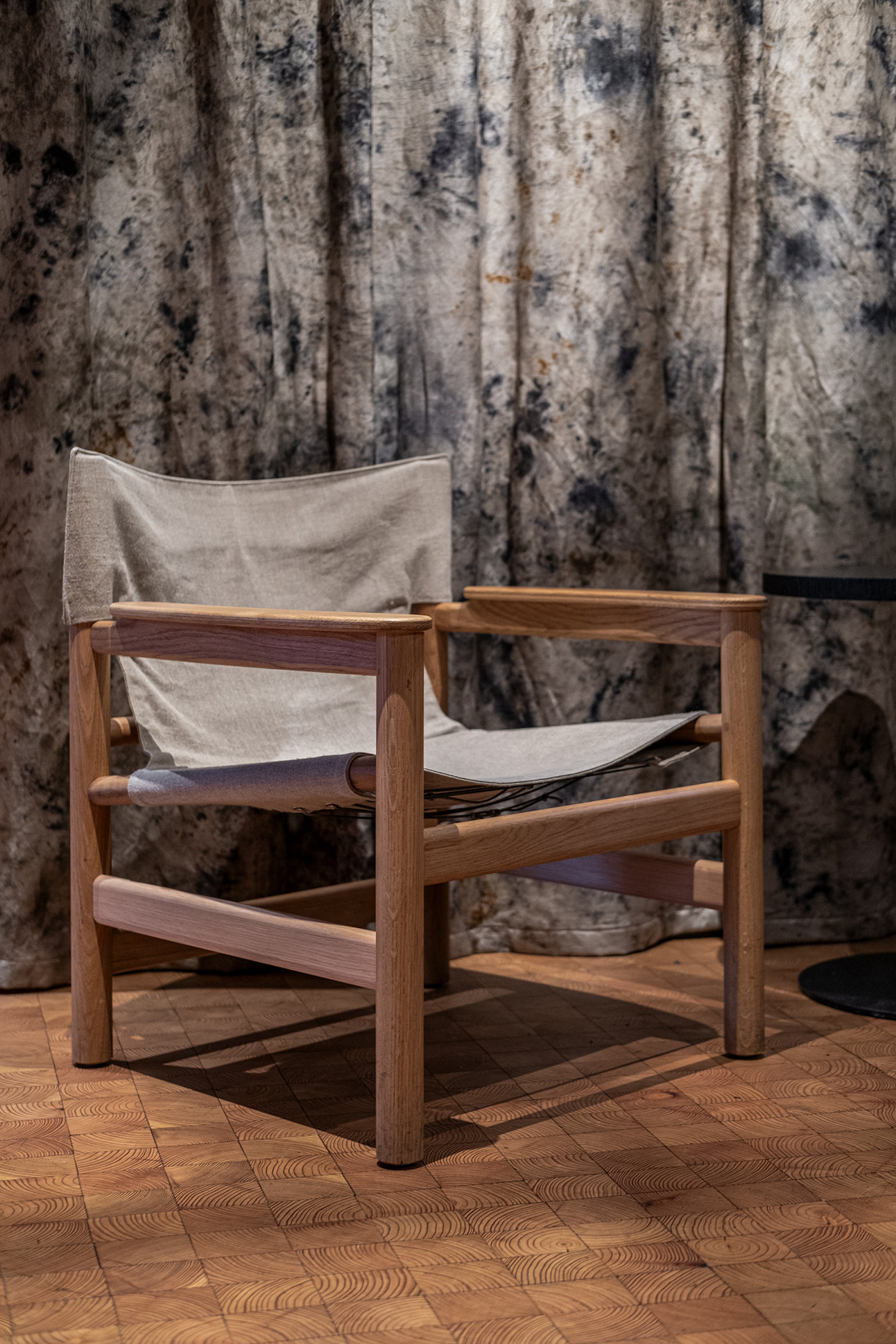 The drapery at Restaurant Ekstedt
The drapery at Restaurant Ekstedt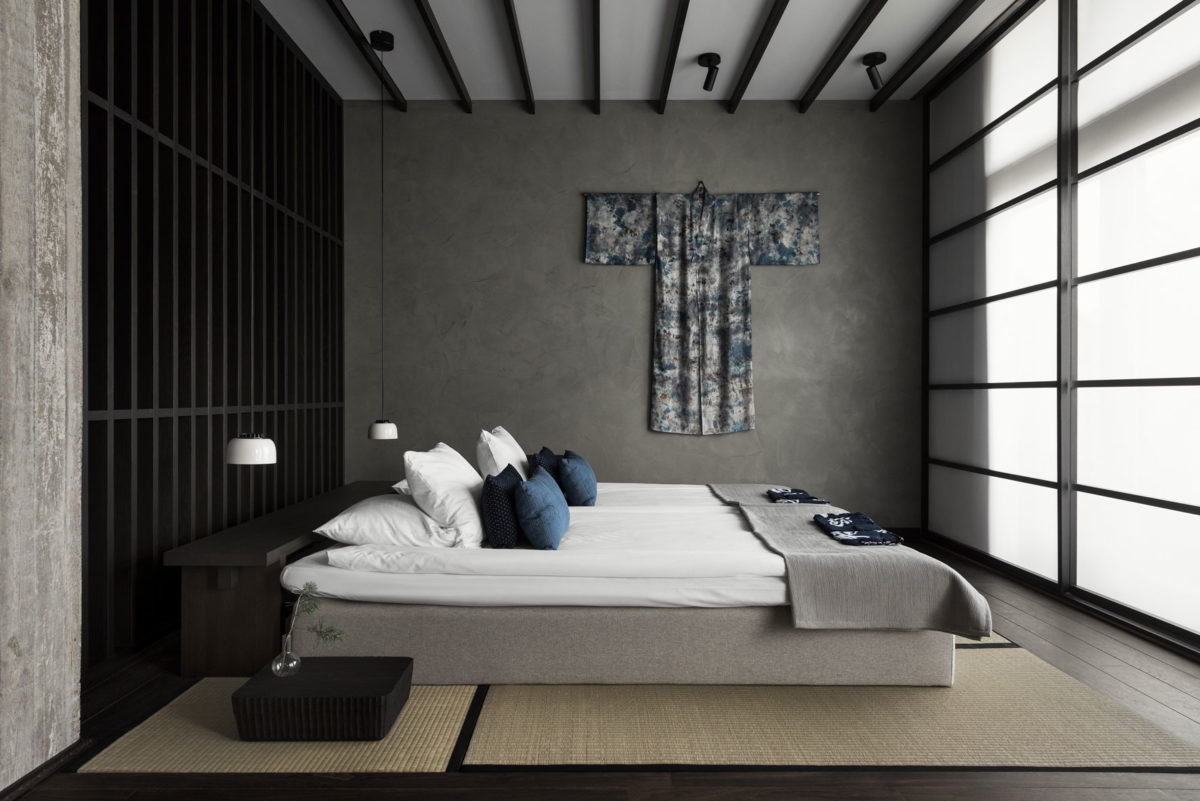 A kimono by Karin used like a piece of art at the Yasuragi
A kimono by Karin used like a piece of art at the YasuragiA: Do you need to treat the fabric before dyeing it?
KB: Yes, that’s necessary because almost all textiles fade over time when exposed to light and washing. Plant pigments are also more sensitive than synthetic dyes. That’s why the fabric must be pre-treated, a process called mordanting, to create a surface for the dye molecules to adhere to.
Alum, a mineral salt, is commonly used for mordanting. But there are also other materials that can be used, such as soy milk or symplocos, made from dried and ground leaves from a tree in Indonesia.
A: Do you have any favorite plants to work with?
KB: I love dyeing with pomegranate peels, as the pigment is very durable and gives an incredible depth of colour. It can also be modified during the same dye process to create everything from shimmering golden yellows to green and deep black.
Madder root is also close to my heart, thanks to its beautiful peachy pink and terracotta tones. And then there are acorns, easily available, free, and perfect for creating a beautiful and lasting dark blue color.
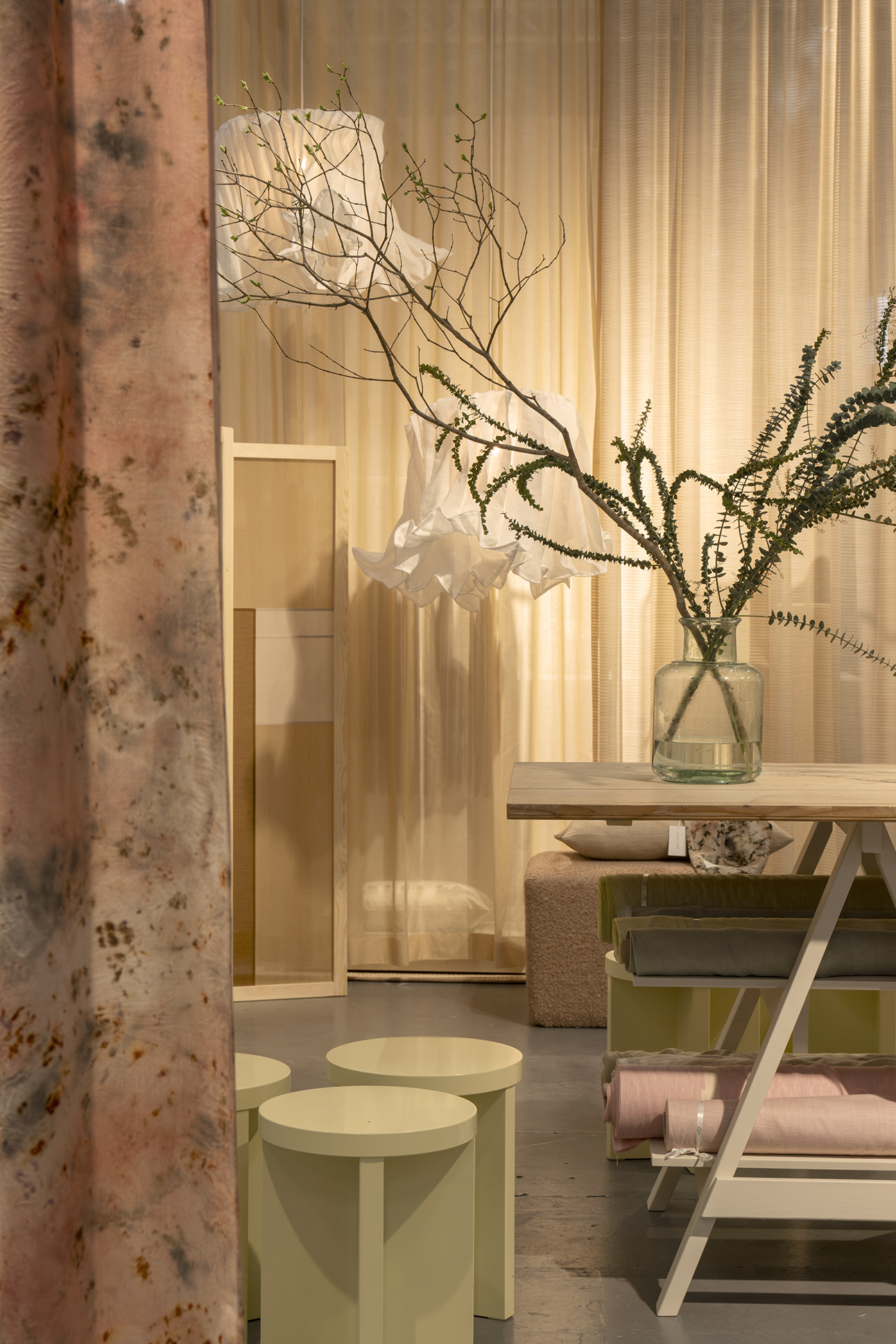 A curtain in Chiara by Karin, to the left, photo from Astrid Creative Space
A curtain in Chiara by Karin, to the left, photo from Astrid Creative Space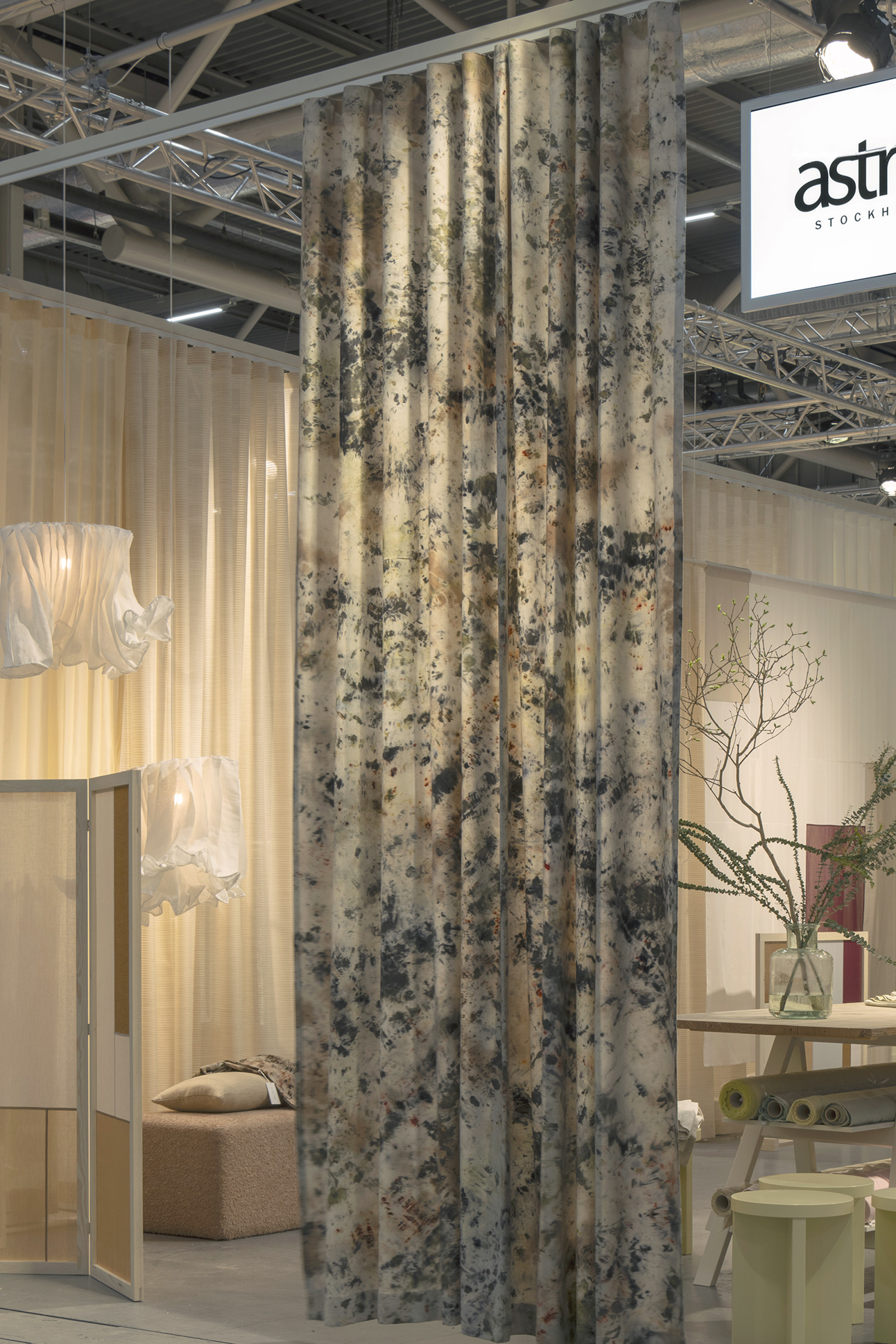 A panel in Valle made by Karin, photo from Astrid Creative Space
A panel in Valle made by Karin, photo from Astrid Creative Space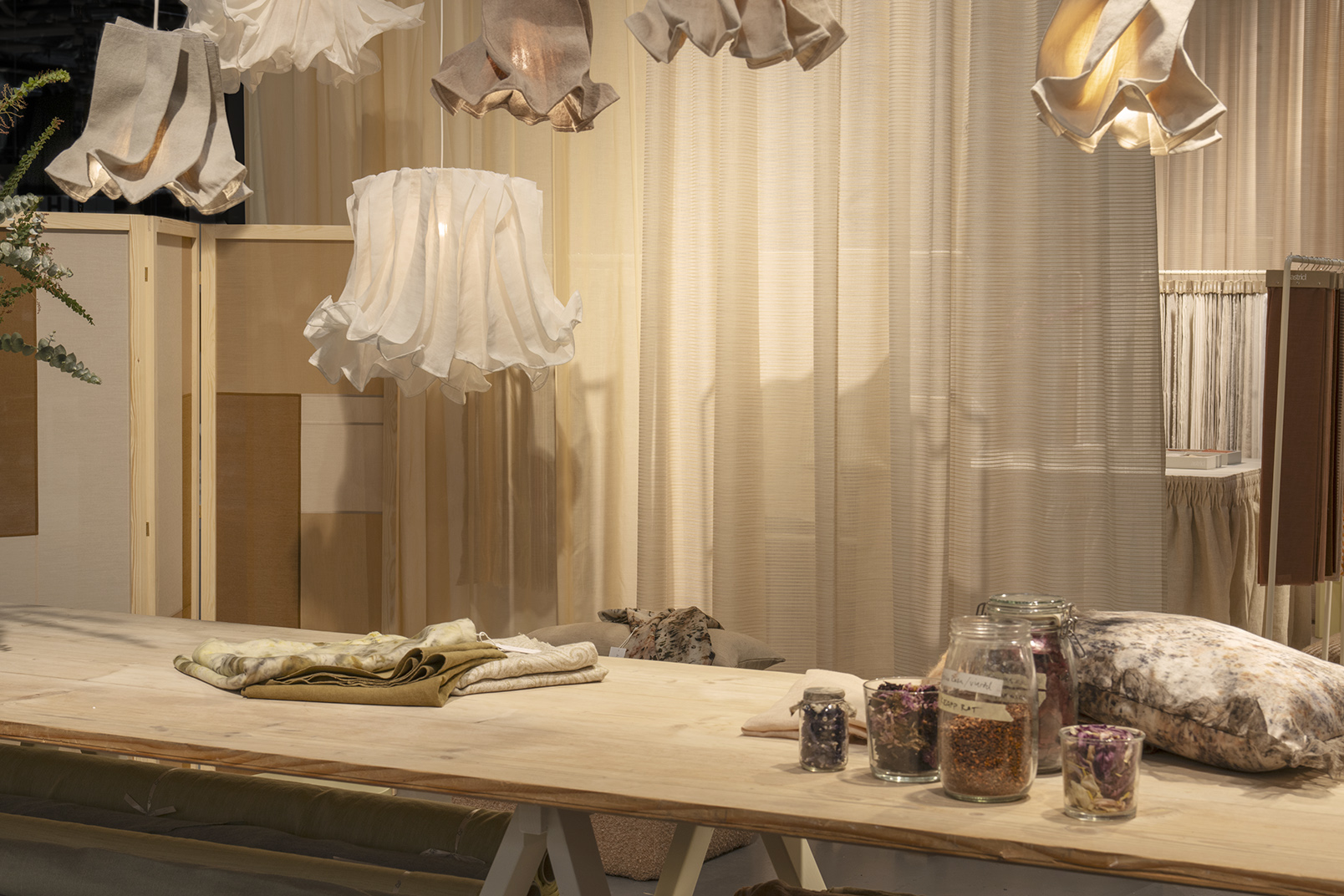 Jars with plant dye pigments, photo from Astrid Creative Space
Jars with plant dye pigments, photo from Astrid Creative Space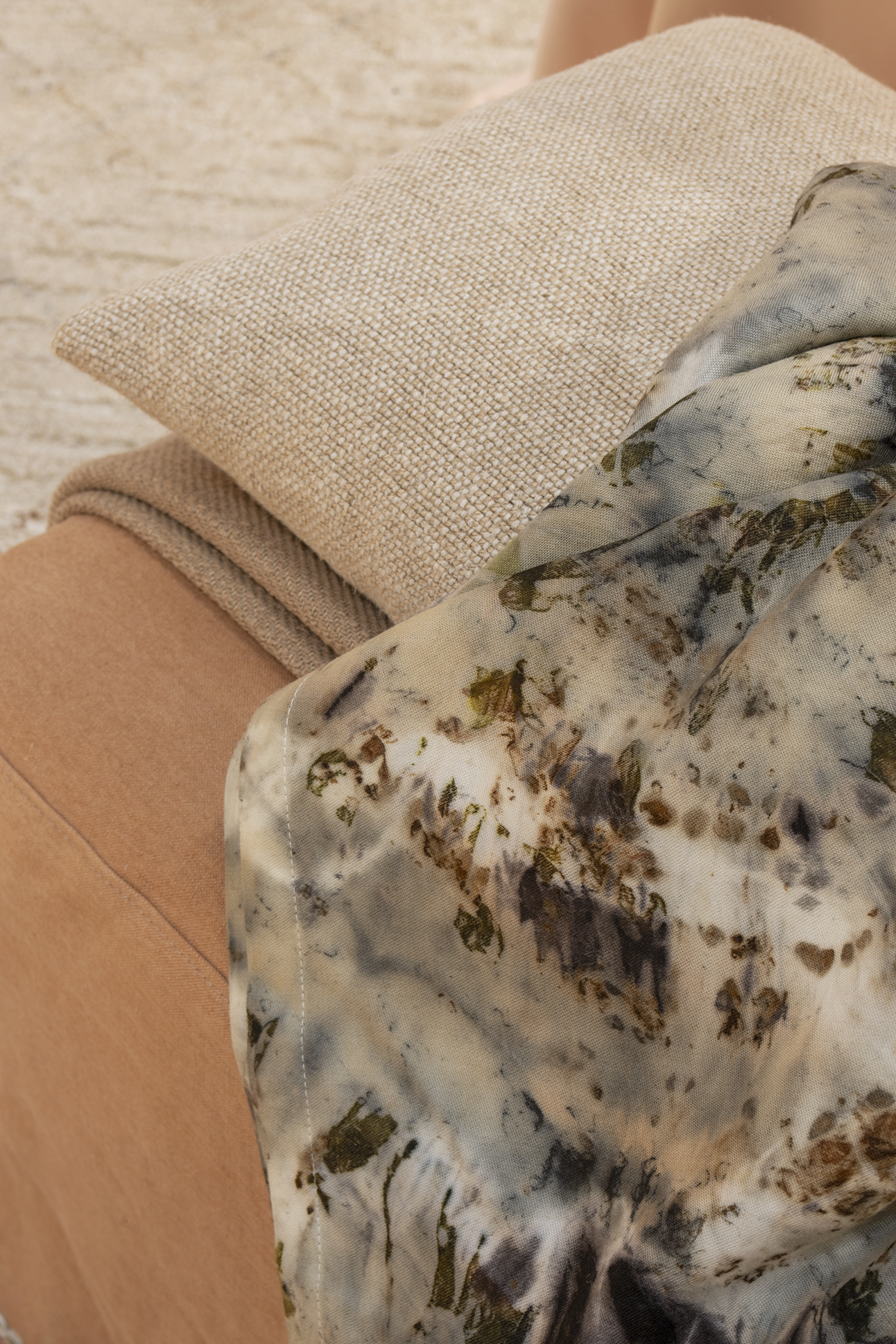 Throw made in Valle, photo from Astrid Creative Space
Throw made in Valle, photo from Astrid Creative Space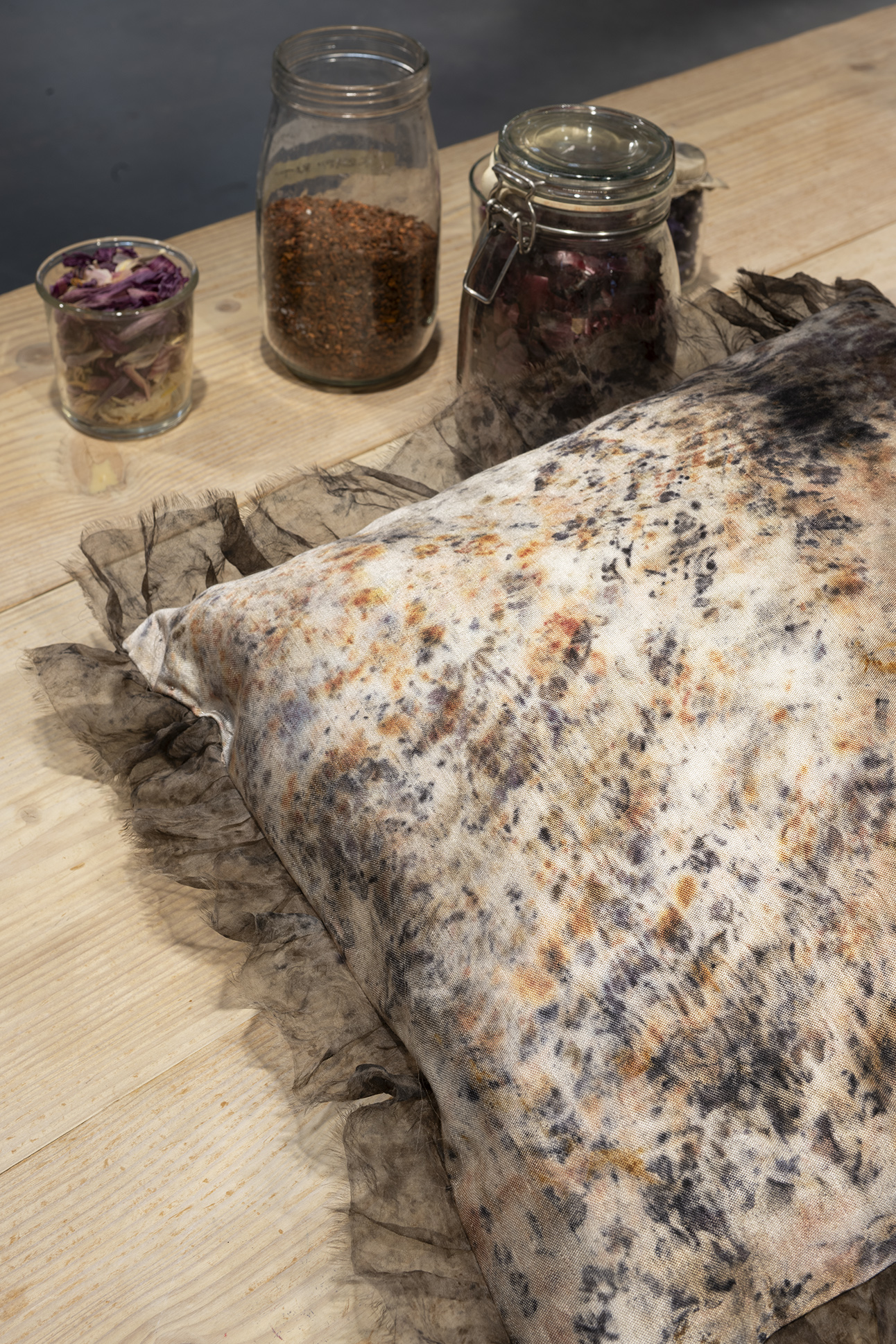 Cushion made in Valle, photo from Astrid Creative Space
Cushion made in Valle, photo from Astrid Creative SpaceI work with a kind of evolution of traditional plant dyeing and tie-dye, which many people might have tried. I create imprints of flowers and leaves directly on the fabric, a method now known as bundle dye or eco printing. There are no rules here: dip, spray, press, or steam to achieve different effects.
A: Can you find most of these in nature around us, or at home in the kitchen?
KB: I use a mix of things from nature, traditional plant dye pigments, and food waste like avocado and pomegranate peels to minimize my climate impact. It’s especially rewarding to make use of things we’d otherwise throw away, like skins from pomegranate, red onion, and avocado.
From nature, you can also gather materials like acorns, marigold, and pincushion flowers, all excellent for plant dyeing.
A: What technique do you use when creating your patterns?
KB: I work with a kind of evolution of traditional plant dyeing and tie-dye, which many people might have tried. I create imprints of flowers and leaves directly on the fabric—a method now known as bundle dye or eco printing. There are no rules here: dip, spray, press, or steam to achieve different effects.
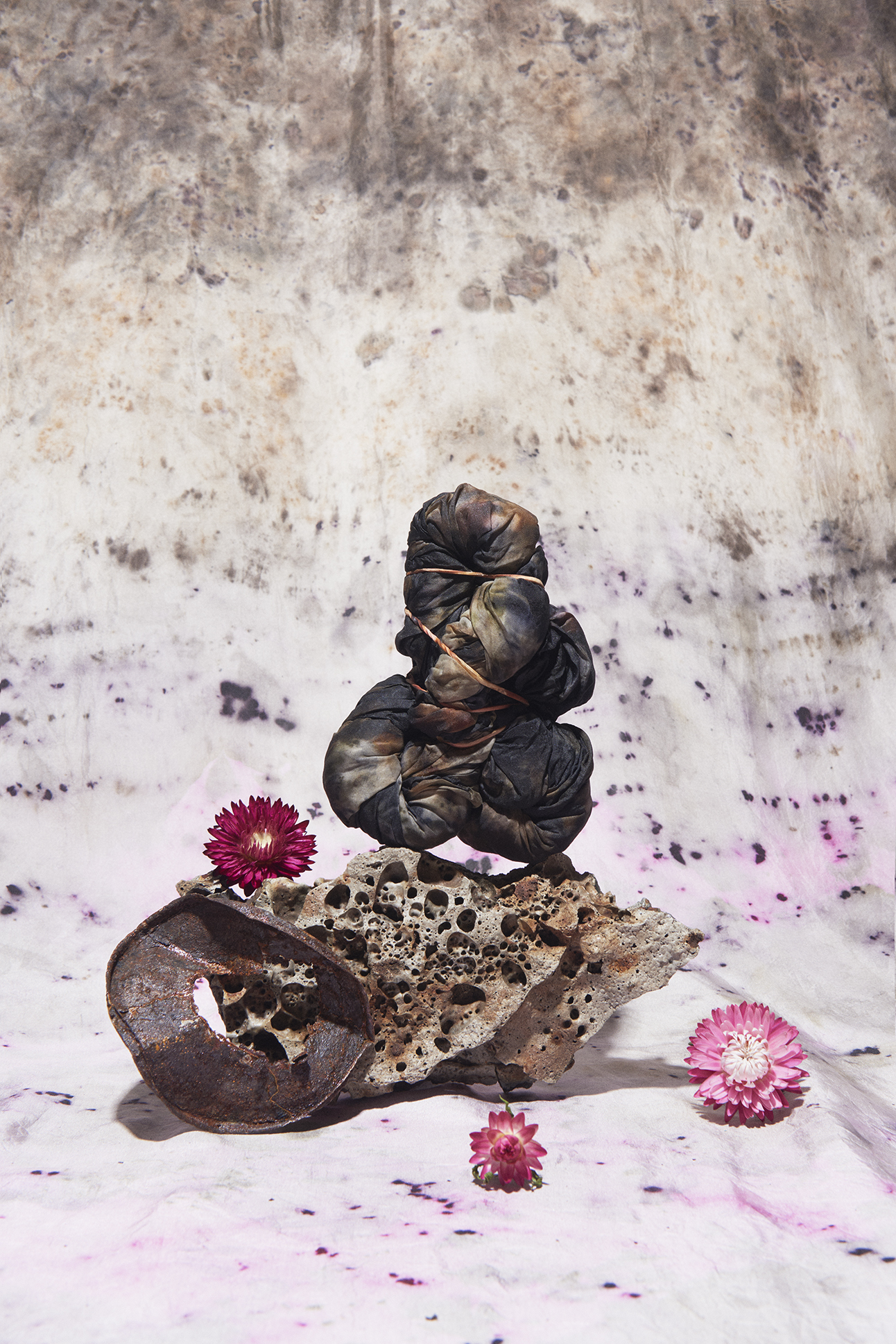 A bundle ready for fixing, photo from Plant Magic
A bundle ready for fixing, photo from Plant Magic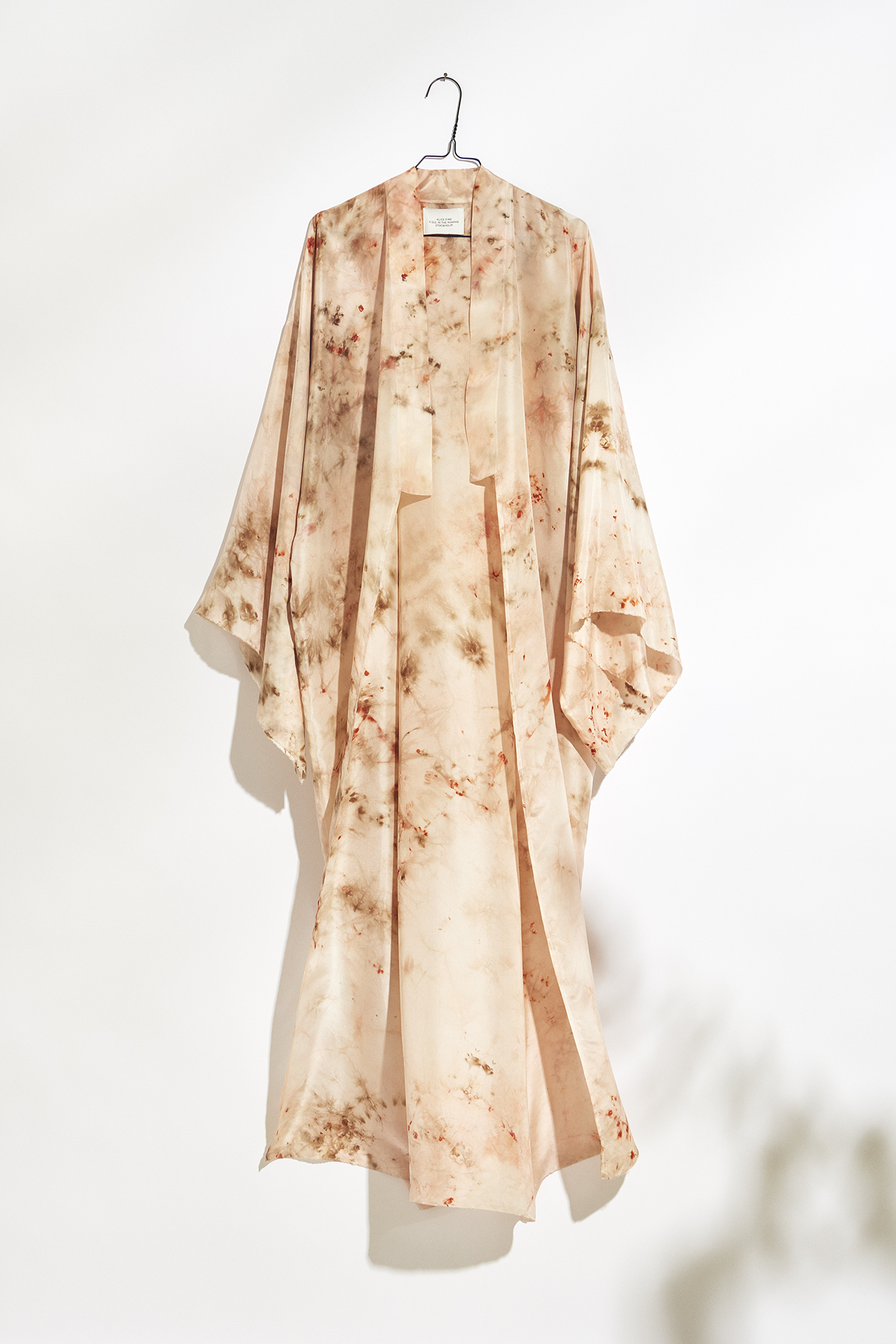 Kimono by Karin, photo from Plant Magic
Kimono by Karin, photo from Plant MagicA: Do you have a dream project?
KB: I’ve always dreamed of working with Dries Van Noten! He’s a master at combining different patterns and colours in a way that looks absolutely magical.
But I also dream of more interior design projects. I love scaling up my techniques and letting them take up more space, especially in public environments.
 Kimonos by Karin, photo from Plant Magic
Kimonos by Karin, photo from Plant Magic